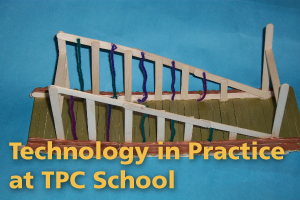Posted: Friday, January 29, 2016
For students these days, technology is much more than just the video games they play after school. Technology is ever-present in schools, and a huge number of jobs require some amount of technological knowledge. To keep up with the fast-paced digital world, The Providence Center School’s technology coordinator Rosetta Spino gives students the skills they need to keep up.
At TPC School, students in grades 4-12 receive weekly technology classes. For Rosetta, one of the main goals is eliminating the learning curve. “One of the most important things is making sure a student can hit the ground running when they get back to their district and not lose time learning the most up-to-date technology,” said Rosetta. She’s currently working on getting Google Chromebooks for every student, something many schools already have.
Although she started her out teaching K-6 math and computers at a private school, most of Rosetta’s career was spent as the head of technology for a public school district. “I found that after a while I really missed teaching and the one-on-one connections you make with students in the classroom. This job is the best of both worlds; it combines my loves of technology and teaching, and the small classroom size allows me to make the lessons individualized.”
Rosetta tries to create projects that introduce technology in a fun way and provide education in other areas. TPC School’s latest technology project may be her most comprehensive and ambitious yet. Students were tasked with building their own bridges, from the research and development phase to the budgeting and construction. The project includes all the STEM categories - Science, Technology, Engineering and Math – and many of the national education standards.
First, as a way of learning PowerPoint, the students put together slideshows about the major types of bridges, found famous examples of each, and identified their strengths and weaknesses. The students also looked at the different branches of engineering.
To get a sense of the bridge building process, Rosetta had some help from the class’s iPads. “The students used an app called Bridge Constructor. You’re allotted so much material to make a bridge, and you can see the effects of cars and trucks passing over them,” said Rosetta. After the students drew up an initial blueprint for their bridge, they presented it to the class for feedback and had the option of changing it.
Then on to the real construction: the criteria stated that bridges span at least 14 inches and use no more than 200 Popsicle sticks (more than half of students changed design during the construction phase). The bridges will be tested in a series of grueling trials in three areas:
Ultimately, Rosetta was very impressed with what the kids came up with. “It really took some planning; you had to be able to weigh the importance of function versus appearance and what you want to focus on more. The students did a great job.”
The project also affirmed what she believes about the educational potential of technology. “Seeing kids with developmental disabilities sit down and focus for 90 minutes while learning and enjoying an assignment is extremely gratifying.” It was such a success that Rosetta is considering entering a statewide competition in which students build bridges out of balsa wood!
Looking to the future, Rosetta wants to continue preparing kids for successful futures and start teaching students grades three and below about technology. “You need to know more than Microsoft Word these days to compete in the global society, and we should start providing the right knowledge at an early age.”
Copyright © 2025 Care New England Health System